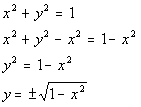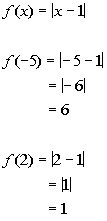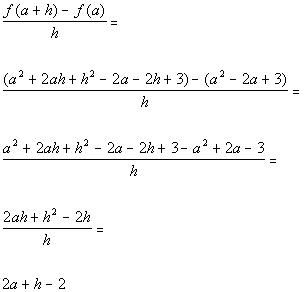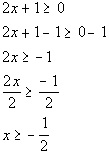

{(1, 5), (2, 6), (3, 7), (4, 8)}
So, this relation would be an example of a
function.
Domain
We need to find the set of all input values. In terms of ordered
pairs, that correlates with the first component of each one. So,
what do you get for the domain?
If you got {1, 2, 3, 4}, you are correct!
Range
We need to find the set of all output values. In terms of ordered
pairs, that correlates with the second component of each one. SO,
what do you get for the range?
If you got {5, 6, 7, 8}, you are absolutely right!
{(-1, 2), (-1, 3), (2, 4)}
So, this relation would not be an example of
a function.
Domain
We need to find the set of all input values. In terms of ordered
pairs, that correlates with the first component of each one. So,
what do you get for the domain?
If you got {-1, 2}, you are correct!
Note that if any value repeats, we only need to list it one time.
Range
We need to find the set of all output values. In terms of ordered
pairs, that correlates with the second component of each one. So,
what do you get for the range?
If you got {2, 3, 4}, you are absolutely right!
![]()

*Inverse of squaring is taking the sq. root
*Solved for y
If you answered no, you are correct.
For example, if our input value x is 0, then our output value y could either be 1 or -1. Note that I could have picked an infinite number of examples like this one. You only need to show one example where the input value is associated with more than one output value to disqualify it from being a function.
This means that at least one input value is associated with more
than one output value, so by definition, y is not a function of x.
![]()

If you answered yes, you are right on. For example, if we plugged in a 1 for x, then y would only equal one value, 5. Note that ANY value you would plug in for x would produce only one value for y.
Note that since it is solved for y, y is our output value and x is our input value.
Since our answer to that question is yes, that means by definition, y is a function of x.
![]()

*Plug in 2 for x and evaluate
![]()
Don't let the fact that we need to plug in an a throw you. You plug it into the function just like you do a number.
Everywhere you have an x in your function,
replace it with an a.

Don't let the fact that we need to plug in the expression a + h throw you. You plug it into the function
just like you do a number. Everywhere you have an x in your function, replace it with an a + h.

Putting it all together we get:

*Combine like terms
*Divide out h from every term


*Plug in 4 for x
![]()
![]()

![]()

*Inv. of mult. 2 is div. 2
*This is our domain
Last revised on March 29, 2010 by Kim Seward.
All contents copyright (C) 2002 - 2010, WTAMU and Kim Seward. All rights reserved.